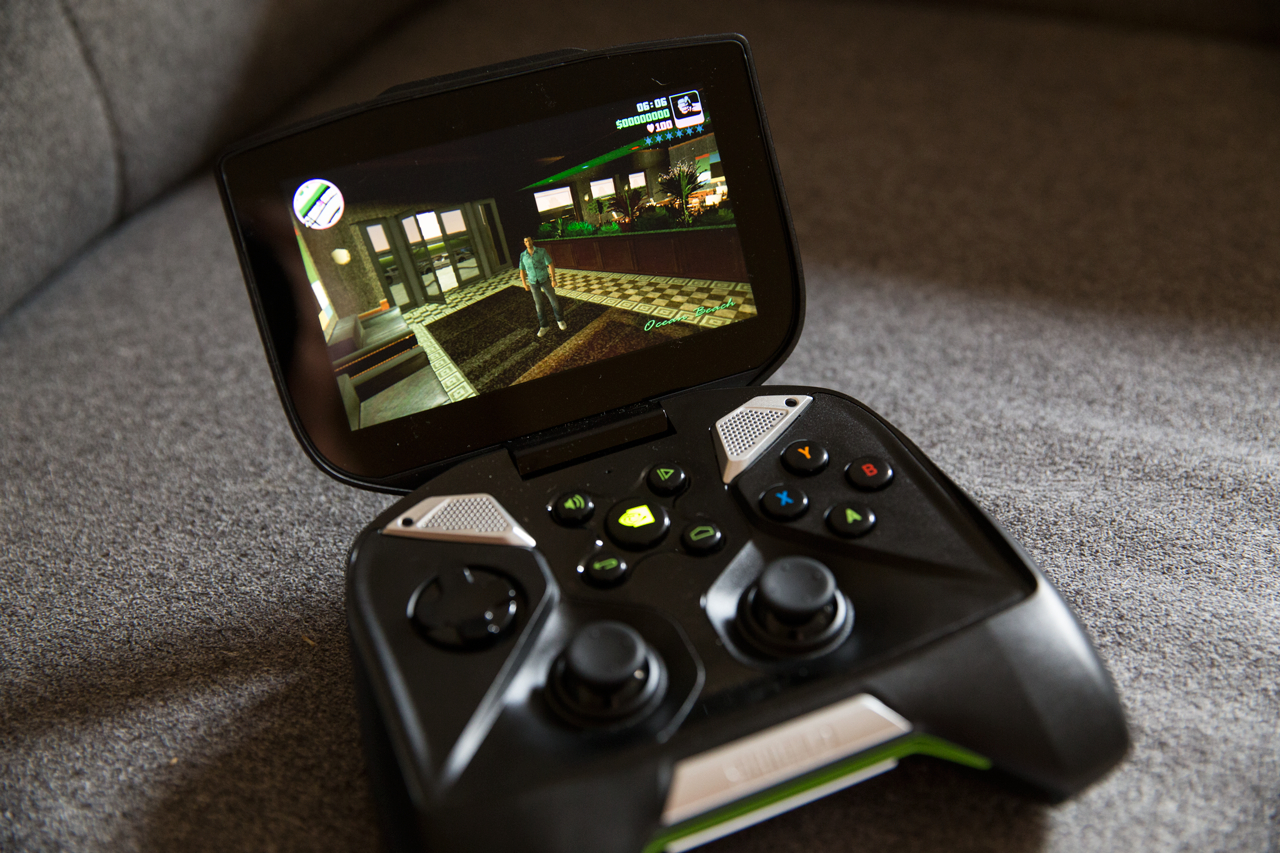
Powered by the world’s fastest mobile processor and billed by its maker as “the ultimate gaming and entertainment portable” the Nvidia Shield is in many way the realisation of thousands of tech fans’ nerdiest dreams: a genuinely powerful portable built around a home console-quality controller with a potentially vast software library. Offering gamers the chance to play games like Borderlands 2 and Skyrim anywhere from their bedroom to the toilet, the Shield at once steals both Nintendo’s “play with the TV off” Wii U thunder and makes Sony’s plans to have all forthcoming PlayStation 4 titles also playable on Vita seem like a copycat move, so it’s little wonder that the console has received a ton of attention the world over.
Currently only available in the US and Canada, lovers of all things sleek and shiny here in Japan who couldn’t wait any longer for an official release have laid down their cash (and with the portable retailing for US$299 that’s nothing to be sneezed at) and imported a Shield for themselves.
Little do they know, however, that simply by powering the thing up within the Land of the Rising Sun they’ll be breaking the law.
It may look a little bit like the portable Xbox than never was, but GPU maker Nvidia’s first ever portable is a completely different beast. Featuring a five-inch multi-touch display that is attached to a high quality controller complete with analogue sticks and shoulder triggers, the console runs not just applications from the Google Play store but streams full, big-budget games from capable Windows PCs, allowing gamers to play big-screen titles anywhere they like so long as it’s within reach of their wireless signal.
To do that, the device requires a strong wireless connection in order to send and receive data at speeds fast enough to make gameplay enjoyable. And that is where we run into a small, but very irritating, legal issue.
Under Japan’s strict Radio Act laws, it is illegal to operate any device that emits a wireless signal unless it has been approved (and carries an official sticker of said approval) for use in Japan and meets standards with regard to signal strength and accessibility. Back when the original iPad launched in North America, for example, millions of Japanese–who had just recently hopped on the iPhone train and couldn’t get enough of Apple–were eager to beat their tech-loving friends and grab one of their own tablets prior to the Japanese release. However, in doing so many ran into problems.
▼ The Shield’s streaming function is perhaps its greatest strength.
Japanese law allows those visiting the country to operate their non-approved WiFi-enabled devices without a license, so there’s no need to worry if you’re planning on visiting and bringing your laptop, iPad or PlayStation Vita with you, but those found to be importing and operating devices that have not been approved under Japan’s Radio Act are, technically, bound by the law and could face prosecution or fines should they dare to fire their machine up. For that reason, you won’t currently find any hands-on reviews of Nvidia’s fledgling console on Japanese websites (unless, of course, they tested the device outside the country first), which explains why sites like 4Gamer.net (Japanese only) are having to make do with features focusing entirely on the console’s exterior, despite having paid to import the thing.
Some argue that laws pertaining to the use of wireless communication devices in Japan are as strict as they are because of the country’s terrain, suggesting that since so much of the population is squeezed into relatively small spaces, without limits on the strength of wireless signals, interference would be a common problem. Others argue that the country’s laws are simply behind the times and need to be rethought fast. Either way, if you’re in Japan and were thinking of picking up Nvidia’s new baby, or any other wireless device for that matter, it might be worth knowing that you could be very close to breaking the law. Whether you choose to do it anyway, of course, is entirely up to you!
Reference: 4Gamer.net (Japanese)
Top image via tctechcrunch inset image: ExtremeTech